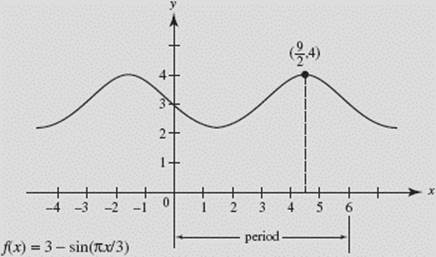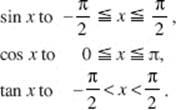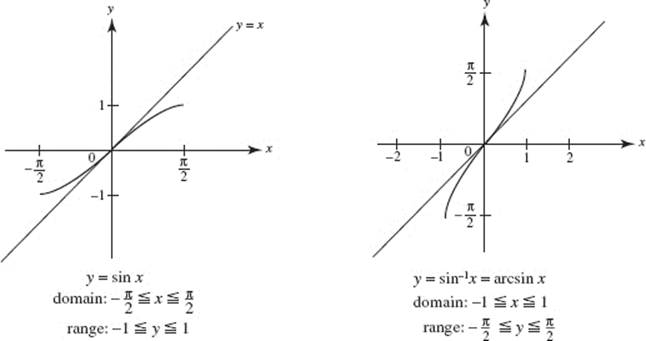Calculus AB and Calculus BC
CHAPTER 1 Functions
D. TRIGONOMETRIC FUNCTIONS
The fundamental trigonometric identities, graphs, and reduction formulas are given in the Appendix.
D1. Periodicity and Amplitude.
The trigonometric functions are periodic. A function f is periodic if there is a positive number p such that f (x + p) = f (x) for each x in the domain of f. The smallest such p is called the period of f. The graph of f repeats every p units along the x-axis. The functions sin x, cos x, csc x, and sec xhave period 2π; tan x and cot x have period π.
The function f (x) = A sin bx has amplitude A and period ![]() g(x) = tan cx has period
g(x) = tan cx has period ![]()
EXAMPLE 10
Consider the function f (x) = ![]() cos (kx).
cos (kx).
(a) For what value of k does f have period 2?
(b) What is the amplitude of f for this k ?
SOLUTIONS:
(a) Function f has period ![]() since this must equal 2, we solve the equation
since this must equal 2, we solve the equation ![]() getting k = π.
getting k = π.
(b) It follows that the amplitude of f that equals ![]() has a value of
has a value of ![]()
EXAMPLE 11
Consider the function ![]()
Find (a) the period and (b) the maximum value of f.
(c) What is the smallest positive x for which f is a maximum?
(d) Sketch the graph.
SOLUTIONS:
(a) The period of f is ![]() or 6.
or 6.
(b) Since the maximum value of −sin x is −(−1) or +1, the maximum value of f is 3 + 1 or 4.
(c) ![]() equals +1 when
equals +1 when ![]() that is, when
that is, when ![]() Solving yields
Solving yields ![]()
(d) We graph ![]() in [−5,8] × [0,5]:
in [−5,8] × [0,5]:

FIGURE N1–6
D2. Inverses.
Inverse trig functions
We obtain inverses of the trigonometric functions by limiting the domains of the latter so each trigonometric function is one-to-one over its restricted domain. For example, we restrict

The graphs of f (x) = sin x on ![]() and of its inverse f −1(x) = sin−1 x are shown in Figure N1–7. The inverse trigonometric function sin−1 x is also commonly denoted by arcsin x, which denotes the angle whose sine is x. The graph of sin−1 x is, of course, the reflection of the graph of sin x in the line y = x.
and of its inverse f −1(x) = sin−1 x are shown in Figure N1–7. The inverse trigonometric function sin−1 x is also commonly denoted by arcsin x, which denotes the angle whose sine is x. The graph of sin−1 x is, of course, the reflection of the graph of sin x in the line y = x.

FIGURE N1–7
Also, for other inverse trigonometric functions,
y = cos−1 x (or arccos x) has domain −1 ![]() x
x ![]() 1 and range 0
1 and range 0 ![]() y
y ![]() π;
π;
y = tan−1 x (or arctan x) has domain the set of reals and range ![]()
Note also that
![]()